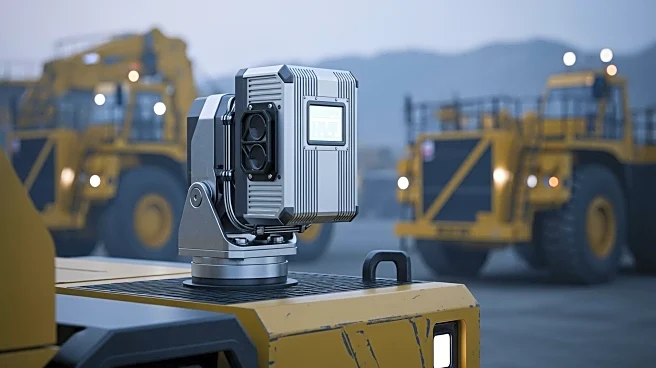What's Happening?
Booyco Electronics, a mine safety systems original-equipment manufacturer, is addressing the uneven implementation of Level 9 vehicle interventions for collision avoidance in mines. Despite being mandatory since 2022, the adoption of these systems has
varied across the industry. The Level 9 standard requires electronic proximity detection systems to signal trackless mobile machinery when threats are detected, activating engineering controls to stop or slow down vehicles. Booyco Electronics CEO Anton Lourens emphasizes the importance of leadership, cross-departmental collaboration, and proper training to ensure successful deployment and use of these systems. The company offers operational-readiness assessments to aid in the adoption process, highlighting potential impacts on operations and pedestrian safety.
Why It's Important?
The implementation of Level 9 collision avoidance systems is crucial for enhancing mine safety and reducing accidents involving vehicles and pedestrians. By taking mechanical control to stop or slow down vehicles, these systems significantly improve safety standards compared to previous warning-only systems. Successful adoption of these systems can prevent unnecessary stoppages and production delays, ultimately supporting long-term safety sustainability in the mining industry. The involvement of all mine departments, including finance and human resources, is essential to boost acceptance and reduce resistance to new protocols.
What's Next?
Booyco Electronics is committed to furthering the adoption of Level 9-compliant systems by integrating them into daily mine activities and safety systems. The company plans to continue deploying systems tailored to specific mine sites, whether underground, surface, hard-rock, or coal mines. By leveraging additional capabilities such as production monitoring and vehicle health tracking, Booyco Electronics aims to optimize fleet and equipment management, reducing stoppages and risks.
Beyond the Headlines
The adoption of collision avoidance systems in mines not only enhances safety but also positions South Africa as a leader in mine safety innovation globally. The integration of these systems into daily operations requires a systemic process of change management, bridging the gap between technology and people. Structured change management is essential to prevent resistance and ensure the effectiveness of the systems.













